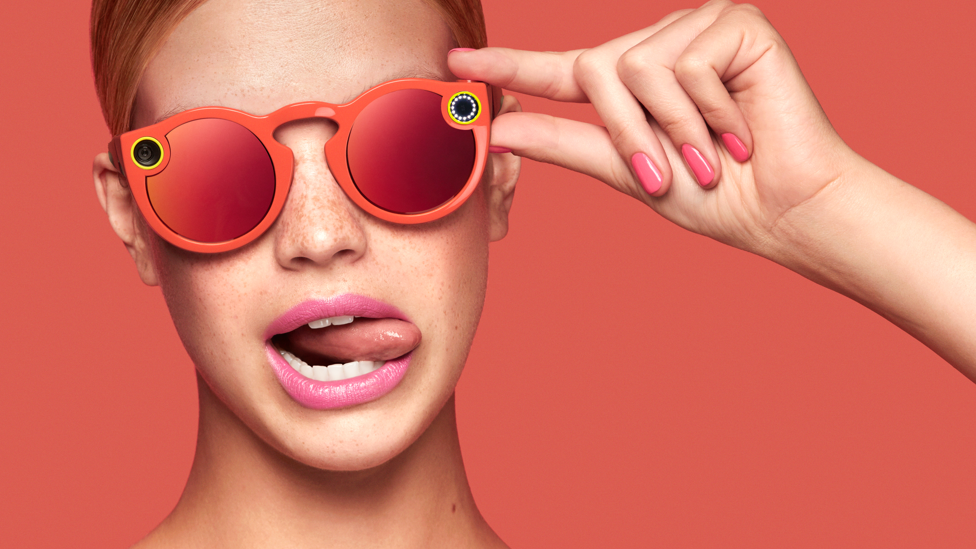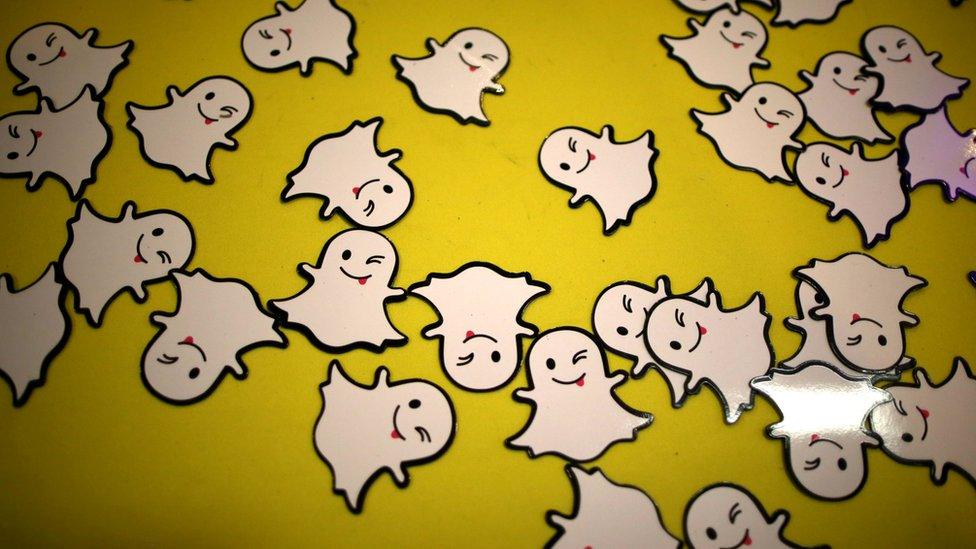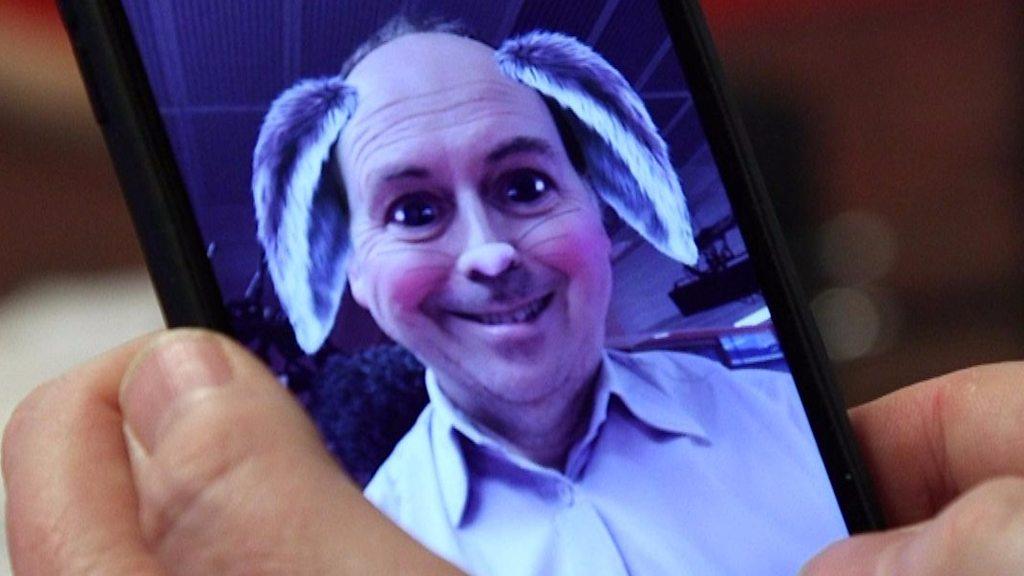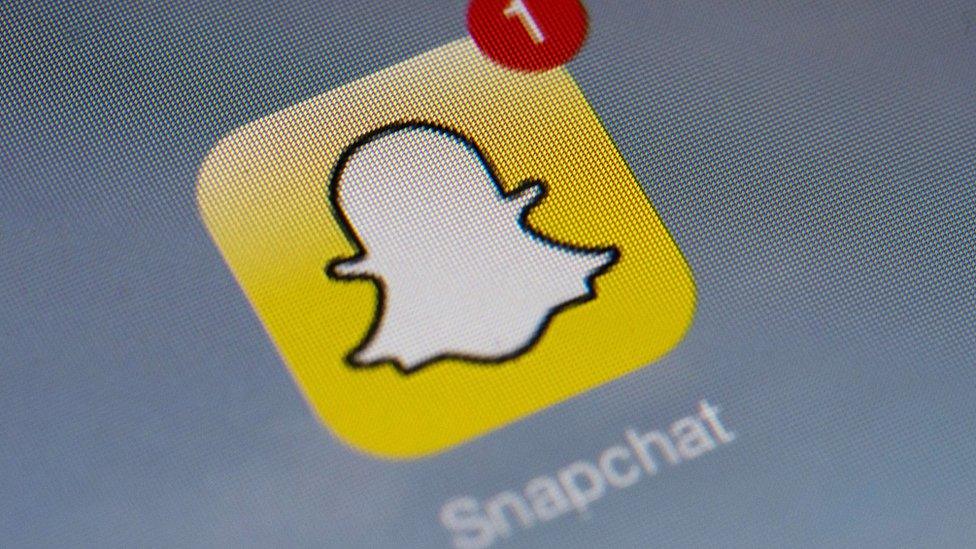Snapchat fans: 'Don't change app'
- Published

There are now glasses for Snapchat, with a built-in camera
As the owner of the Snapchat messaging app targets a valuation of about $24bn (£20bn), one question hangs in the air: will it stay cool?
Users of the popular service are wondering how Snapchat might change as efforts to make it profitable evolve.
Most of Snapchat's users are aged between 13 and 24, and many advertisers choose to target people in their teens and 20s via the app.
Snapchatters out shopping in London spoke to the BBC about why the service seems to resonate so strongly with young people - and whether they'll stick with it should advertising become more prevalent.
Dominic, 21, said he uses the app every day.
"You don't have to go through a news feed," he points out - a key benefit, it seems.
Snapchat isn't as laden with information as Facebook, for example.
"And it's so short - I've not got patience to read big statuses. It's visual."
Putting Snapchat to the test
Plus, importantly, you can see which of your friends have viewed your latest post.
Many young people that use Snapchat are well aware that older generations don't quite get it.
"My mum couldn't work it," said Grace, also 21.
Dominic agreed this was important - it means he feels comfortable to just "post whatever".
"The older people as well, they wouldn't post much, because they're just making dinner and doing the housework," he says.
"Young people are doing more fun things like going out."
Snapped up
This has always been Snapchat's unique selling proposition. It's seen as cool.
But growing an audience and trying to make a profit necessitates tweaking what was once an app where people merely sent pictures back and forth to one another.
One of the original attractions was that those pictures would expire shortly after they were viewed - but since summer last year, users have been able to save them via a feature called Snapchat Memories.
"I kind of preferred it when it was just simple, send pictures that disappeared," said Charlie, also in his early 20s.

Snapchat has been particularly popular with those who love to take selfies
There are already advertisements on Snapchat, but it is possible the app will feature more as Snap searches for that elusive profit.
"If there were adverts all the time, I wouldn't go on it," added Charlie, however.
He and his friend Claire agreed on another point: if they had to pay to use it, that would definitely discourage them.
Olivia is another Snapchat fan who's been using the app for a few years.
But when Snapchat launched filters that could be sponsored by companies, external in 2015, the move "put her off", she said.
Seeking a niche
For her, Snapchat is already less enticing than it used to be.
"They need a new niche that will attract people back," she said.
It's worth remembering a young audience, while often highly engaged with social media, can also be somewhat fickle.
Beatrice, 29, was blogging about her experiences as a student in London, and using Snapchat, when she noticed a sudden shift.

Snapchat filters let users wear digital masks, try out a new look or even change the shape of their face
"Everyone started using Instagram Stories, external [a Snapchat-like way of sending annotated photos to contacts]," she said.
"Everybody moved to Instagram Stories and I lost a lot of followers - so I decided to use that [instead]."
As other services have offered Snapchat-like interactions, Snapchat has also evolved, incorporating new features such as video chat.
Niila, who is 19 and from Finland, said: "It's not so good when applications start to be the same as one another."
It is important, then, that Snapchat continues to be seen as somehow different.
Though, interestingly, perhaps the idea the app remains largely unknown to older generations is not such a crucial factor for all.
Niila's mother used it, he said.
"It's not only for young people," said Kia, 19, also from Finland.
Perhaps Melissa, 23, who has been using Snapchat for four or five years, hit the nail on the head.
She likes how the app has obviously been designed to appeal to young people and suggested there might not be any need to over-think its appeal.
"It's just a fun way to send pictures to your friends," she said.
- Published2 March 2017

- Published4 February 2017

- Published2 February 2017

- Published16 November 2016

- Published14 October 2016
